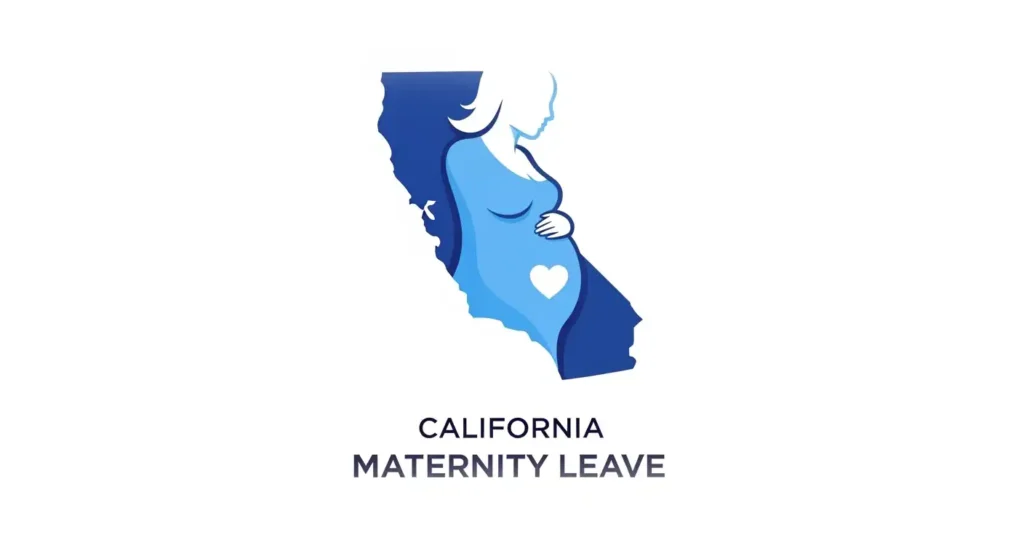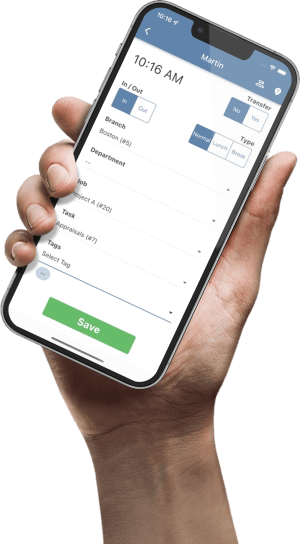Free California Maternity Leave Calculator
California Maternity Leave Calculator
Your Estimated Maternity Leave Summary
Total Job-Protected Leave
Total Paid Leave (Partial Pay)
Estimated Weekly Pay
Your Leave Timeline
Eligibility Details
| Program | Type | Your Eligibility |
|---|---|---|
| PDL (Pregnancy Disability Leave) | Job Protection | |
| CFRA (CA Family Rights Act) | Job Protection | |
| FMLA (Family & Medical Leave Act) | Job Protection | |
| SDI (State Disability Insurance) | Wage Replacement | |
| PFL (Paid Family Leave) | Wage Replacement |
Explanation of Your Results
Disclaimer: This calculator provides general estimates based on California maternity leave laws and is for informational purposes only. It does not constitute legal, tax, or HR advice. Actual eligibility and benefits may vary depending on your employer policies, state determinations, and individual circumstances. For official guidance, please consult the California Employment Development Department (EDD), your HR department, or a qualified professional.
Found our Free California Maternity Leave Calculator useful? Bookmark and share it.

Quick Guide to Maternity Leave in California
Navigating California maternity leave can be complex, but this comprehensive guide breaks it down. Understanding the robust framework of laws in California is essential for both employees and employers. The state’s system is a unique blend of job-protected leave and separate wage-replacement programs. This means your right to take time off and your right to get paid during that time are governed by different sets of rules. Key programs include Pregnancy Disability Leave (PDL), the California Family Rights Act (CFRA), the federal Family and Medical Leave Act (FMLA), State Disability Insurance (SDI), and Paid Family Leave (PFL). Properly sequencing these benefits is the key to maximizing your leave time and ensuring financial stability. This guide provides a detailed analysis of California maternity leave laws, eligibility requirements, benefit calculations, and a clear timeline to help you plan effectively.
TL;DR
- California maternity leave is not one single policy but a combination of different laws for job protection (PDL, CFRA, FMLA) and state programs for wage replacement (SDI, PFL).
- You can potentially take up to 7 months of job-protected leave by stacking Pregnancy Disability Leave (PDL) and California Family Rights Act (CFRA) leave.
- Pregnancy Disability Leave (PDL) provides up to 4 months of job-protected leave for the time you are medically disabled by pregnancy, childbirth, or a related condition.
- California Family Rights Act (CFRA) provides an additional 12 weeks of job-protected leave for baby bonding after your pregnancy disability period ends.
- State Disability Insurance (SDI) provides partial pay (60-90% of wages) during your disability period.
- Paid Family Leave (PFL) provides up to 8 weeks of partial pay (60-90% of wages) during your bonding leave.
- Eligibility for job protection (CFRA/FMLA) is stricter (requiring 12+ months and 1,250+ hours of work) than eligibility for wage replacement (SDI/PFL), which only requires minimal earnings.
Table of Contents
The Foundation of California Maternity Leave
Navigating the landscape of maternity leave in California requires a foundational understanding of its unique structure. Unlike a single, monolithic "maternity leave" policy, the state's approach is a sophisticated framework built on two distinct pillars: laws that protect an employee's job and state-administered programs that provide partial wage replacement. Comprehending this division is the essential first step for any employee, family, or employer planning for the arrival of a new child.
Understanding the Dual System: Job Protection vs. Wage Replacement
The most common point of confusion surrounding California maternity leave is the difference between the right to be absent from work and the right to be paid during that absence. These are separate entitlements, governed by different laws with distinct eligibility criteria. An employee may qualify for one, both, or neither.
1. Job-Protected Leave
These laws ensure you have a job to return to. They are typically unpaid on their own. Eligibility mainly depends on your employer's size and your tenure.
PDL & CFRA: For employers with 5+ employees.
2. Paid Leave Benefits
These state programs (SDI & PFL) provide income while you are on leave. Eligibility depends on your earnings and contributions via payroll deductions.
2025 Pay Rate: Up to 90% of wages.
Job-Protected Leave
This category consists of state and federal laws that make it illegal for a covered employer to terminate an employee for taking a qualifying leave of absence. The principal laws governing job protection are:
- Pregnancy Disability Leave (PDL)
- California Family Rights Act (CFRA)
- Family and Medical Leave Act (FMLA)
Wage Replacement Benefits
This category comprises state-administered insurance programs that provide partial income to eligible workers who have lost wages due to a qualifying event. The two key programs are:
- State Disability Insurance (SDI)
- Paid Family Leave (PFL)
At-a-Glance Eligibility Matrix
| Program | Primary Purpose | Type of Entitlement | Employer Size Requirement | Employee Tenure/Hours Requirement | Maximum Duration | Pay Status |
|---|---|---|---|---|---|---|
| PDL | Pregnancy-related disability | Job Protection | 5 or more employees | None | Up to 4 months (17 1/3 weeks) per pregnancy | Unpaid; can use SDI for wage replacement |
| CFRA | Baby bonding; family/own serious health condition | Job Protection | 5 or more employees | 12+ months of service AND 1,250+ hours worked in prior 12 months | 12 weeks per 12-month period | Unpaid; can use PFL for wage replacement |
| FMLA | Baby bonding; family/own serious health condition | Job Protection | 50 or more employees within a 75-mile radius | 12+ months of service AND 1,250+ hours worked in prior 12 months | 12 weeks per 12-month period | Unpaid; runs concurrently with PDL/CFRA |
| SDI | Own non-work-related disability (incl. pregnancy) | Wage Replacement | Not applicable (State program) | Earned at least $300 in base period with CASDI deductions | Up to 52 weeks (typically 10-12 weeks for pregnancy) | Partial pay (60-90% of wages, up to a weekly max) |
| PFL | Baby bonding; care for sick family member | Wage Replacement | Not applicable (State program) | Earned at least $300 in base period with CASDI deductions | 8 weeks per 12-month period | Partial pay (60-90% of wages, up to a weekly max) |
Securing Your Job: A Deep Dive into Protected Leave Laws
This section provides an exhaustive legal analysis of each job protection statute. It clarifies who is covered, for how long, and under what conditions an employee is entitled to take leave and be reinstated to their job.
Pregnancy Disability Leave (PDL)
Pregnancy Disability Leave is California's foundational protection for pregnant workers, providing a critical safety net for employees during the period they are medically unable to work due to pregnancy, childbirth, or a related condition.
The California Family Rights Act (CFRA)
The California Family Rights Act provides job-protected leave for a variety of family and medical needs. In the context of maternity leave, its primary function is to provide a separate period of leave for baby bonding that begins after an employee is no longer disabled by pregnancy.
The Federal Family and Medical Leave Act (FMLA)
While California's state laws often provide more generous protections, the federal FMLA remains a relevant and important component of the maternity leave framework. It provides a federal layer of job and benefit protection that runs concurrently with state leaves.
Securing Your Income: Navigating Wage Replacement Programs
This section shifts focus from the legal right to be absent from work to the financial mechanisms for getting paid during that absence. California's wage replacement programs, State Disability Insurance (SDI) and Paid Family Leave (PFL), are state-run social insurance systems, not employer-funded benefits.
State Disability Insurance (SDI) for Pregnancy
SDI is a state-mandated insurance program that provides partial wage replacement to eligible workers who are unable to perform their regular work due to a non-work-related disability, including pregnancy and childbirth.
A Historic Boost for Families in 2025
Starting January 1, 2025, California significantly increases wage replacement rates, making it more affordable for families to take essential leave.
Benefit Amount and Duration
- Benefit Calculation: Provides approximately 60% to 70% of wages. As of January 1, 2025, this increases to 90% for lower-income earners.
- Weekly Maximum: Benefits are capped at a maximum weekly amount, adjusted periodically.
- Duration for Pregnancy: Typically paid for up to 4 weeks before the due date and 6 weeks after a vaginal birth (or 8 weeks for a C-section). Can be extended for medical complications.
Paid Family Leave (PFL) for Bonding
Paid Family Leave is an extension of the SDI system that provides partial wage replacement to workers who take time off to bond with a new child.
The Integrated Maternity Leave Timeline
This section synthesizes the individual components of job protection and wage replacement into a practical, integrated timeline. By illustrating how these leaves and benefits interact over time, expecting parents and employers can visualize the entire maternity leave journey.
Putting It All Together: Sequencing Your Leave and Pay
The maternity leave process in California follows a logical sequence of events, from initial planning to the final return to work.
Phase 1: Disability Leave
Up to 4 Months (PDL)
Job is protected. Income from SDI.
Phase 2: Bonding Leave
Up to 12 Weeks (CFRA)
Job is protected. Income from PFL for up to 8 weeks.
Sample Timelines and Scenarios
To provide a clear, visual representation of how these laws interact, the following timelines illustrate common maternity leave scenarios.
Scenario A: Uncomplicated Pregnancy (Eligible for All Leaves)
Scenario B: Leave with Pregnancy Complications
Scenario C: Paternity/Partner Leave (Non-Birthing Parent)
Leave Durations at a Glance
-
PDL (Job Protection)Up to 17.3 Weeks
-
CFRA (Job Protection)Up to 12 Weeks
-
PFL (Paid Leave)Up to 8 Weeks
Essential Rights and Strategic Considerations
Beyond the core entitlements of leave and pay, California law provides a suite of additional protections that are vital for a complete understanding of a pregnant employee's rights.
Beyond Leave: Accommodations, Health Insurance, and Anti-Discrimination
- Reasonable Accommodations: Employers must provide reasonable accommodations for pregnancy-related medical needs.
- Health Insurance Continuation: During any period of job-protected leave, the employer must continue to pay its portion of the employee's group health insurance premiums.
- Protection from Discrimination and Retaliation: It is illegal for an employer to discriminate, harass, or retaliate against an employee for being pregnant or for using their leave rights.
Conclusion: A Summary of Key Entitlements and Actionable Steps
California's maternity leave framework is comprehensive but complex. The state's laws provide robust job security that often exceeds federal standards, most notably by covering smaller employers and allowing for a sequential leave period that can last up to seven months. Parallel to these protections, state insurance programs offer partial wage replacement to nearly all contributing employees.
Am I Eligible? A Simple Flowchart
Step 1: Job Protection
Does your employer have 5 or more employees?
Step 2: Paid Benefits
Have you paid into the "CA SDI" fund through payroll deductions in the last 5-18 months?
Actionable Steps for Expecting Parents
- Determine Eligibility: As early as possible, assess your eligibility for PDL, CFRA, FMLA, SDI, and PFL.
- Provide Timely Notice: Inform your employer of your need for leave at least 30 days in advance, if foreseeable.
- File State Claims: Remember that SDI and PFL are administered by the state's EDD, not your employer. You must file claims directly with the EDD.
- Coordinate with Your Employer: Discuss how company policies (like vacation or sick leave) will coordinate with your state benefits.
- Confirm Health Benefits: Verify with HR that your health insurance will be maintained and clarify how to pay your portion of the premiums.
- Understand Your Reinstatement Rights: Know that you are entitled to return to your same or a comparable job at the end of your protected leave.
Simplify Your HR and Payroll Management
Managing employee leave, ensuring compliance, and handling payroll can be complex. TimeTrex offers an all-in-one HRM solution to automate these processes, saving you time and reducing errors. Explore how our tools can streamline your workforce management.
Learn More About TimeTrex HRMDisclaimer: The content provided on this webpage is for informational purposes only and is not intended to be a substitute for professional advice. While we strive to ensure the accuracy and timeliness of the information presented here, the details may change over time or vary in different jurisdictions. Therefore, we do not guarantee the completeness, reliability, or absolute accuracy of this information. The information on this page should not be used as a basis for making legal, financial, or any other key decisions. We strongly advise consulting with a qualified professional or expert in the relevant field for specific advice, guidance, or services. By using this webpage, you acknowledge that the information is offered “as is” and that we are not liable for any errors, omissions, or inaccuracies in the content, nor for any actions taken based on the information provided. We shall not be held liable for any direct, indirect, incidental, consequential, or punitive damages arising out of your access to, use of, or reliance on any content on this page.
Trusted By
Trusted by 3.2M+ Employees: 21 Years of Service Across Startups to Fortune 500 Enterprises
Join our ever-growing community of satisfied customers today and experience the unparalleled benefits of TimeTrex.










Strength In Numbers
Join The Companies Already Benefiting From TimeTrex
Time To Clock-In
Start your 30-day free trial!
Experience the Ultimate Workforce Solution and Revolutionize Your Business Today
- Eliminate Errors
- Simple & Easy To Use
- Real-time Reporting

Saving businesses time and money through better workforce management since 2003.
Copyright © 2025 TimeTrex. All Rights Reserved.
